Rock stars at Kew: Alpine House rockery and dry garden
I’ve never been much into glasshouses. I generally find them jungly, warm, and humid — conditions I don’t enjoy during Austin’s long summers and don’t wish to experience artificially. But an alpine glasshouse, with cool temps, tidy potted plants, and a nice breeze? Bring it on!
While at Kew Gardens in London last month, I happily explored its Alpine House and surrounding rock garden, where chunky boulders make naturalistic raised beds and crevices for dry-garden plants from all over the world.
I’d never seen a stone trough garden as massive as this one, which creates an alpine landscape in miniature with jagged slabs of thin stone placed on edge, like a mountain range, and small plants growing like miniature trees and shrubs at their base. The tall, white flowers throw off the effect a bit, but otherwise it’s wonderful.
More trough planters are arranged in a central plaza of the rock garden.
A rock garden wouldn’t be complete these days without a crevice garden. Again, I like the way the vertical slabs create the impression of a distant mountain range.
The architecture of the Alpine House itself suggests the mountains. However, the design is about function first, as Kew’s website explains: “The Davies Alpine House was designed to create the cool, dry and windy conditions that alpine plants favour, without using energy-intensive air conditioning and wind pumps…The glasshouse is 16m long and 10m high. This creates a stack effect that draws in cool air through openings on the sides and releases warm air through vents in the roof.”
Inside, rocky terraces provide perches for plants that grow naturally above the treeline.
South African Rhodohypoxis baurii. All the plants in the Alpine House are grown in Kew’s alpine nursery and brought here for display only when they start blooming.
Some are displayed even when not blooming, and no wonder. Look at this pettable green cupcake.
And these cute little succulents. They do look like they’re about to bloom though.
A rocky display
Mice were running around inside and out of the Alpine House…
… noshing on seeds. They were pretty cute too. I wonder if they’re a pest to the gardeners?
A table display of flowering plants in terracotta pots looked especially lovely.
White flowers on long stems seem to be shooting out of this Saxifraga hostii.
Another look
Gorgeous
Back outside in the rock garden, something orange caught my eye.
A spiral aloe in bloom!
How I wish I could grow these in Texas.
Wandflower, or angel’s fishing rod (Dierama mossii) — I adore this too.
Agaves are at home here too.
A textural grass garden makes a good exit from the dry gardens of the Alpine House.
Coming up next: Kew’s Mediterranean Garden, Treetop Walkway, and Japanese Garden. For a look back at Kew’s buzzy art installation The Hive, click here.
I welcome your comments; please scroll to the end of this post to leave one. If you’re reading this in a subscription email, click here to visit Digging and find the comment box at the end of each post.
_______________________
Digging Deeper: News and Upcoming Events
Give a listen to Hothouse, “a new podcast about design, ecology, and the way we garden now,” hosted by Austin landscape designer Leah Churner. Tune in for her in-depth and insightful interviews with regional gardening experts like Central Texas Gardener‘s Linda Lehmusvirta, author Jenny Peterson, and designer Colleen Dieter. As with my own Garden Spark speaker series, Hothouse is cultivating gardening conversations for thinking gardeners (as I like to call us) in the Austin area.
Texas Hill Country friends and travelers, read The Texas Wildflower, a terrific new digital magazine featuring the people, businesses, culture, and scenery of our region. Published by San Antonio-based Pamela Price, whom I’ve followed online for years because of our shared interest in gardening (in fact, my book is included in her “Favorite Hill Country Garden Things”), the magazine will inspire you to get out and explore our unique and beautiful region. Subscribe to The Texas Wildflower today.
Join the mailing list for Garden Spark Talks! Inspired by the idea of house concerts, I’m hosting a series of garden talks by inspiring designers and authors out of my home. Talks are limited-attendance events and generally sell out within just a few days, so join the Garden Spark email list for early notifications. Simply click this link and ask to be added.
All material © 2006-2018 by Pam Penick for Digging. Unauthorized reproduction prohibited.



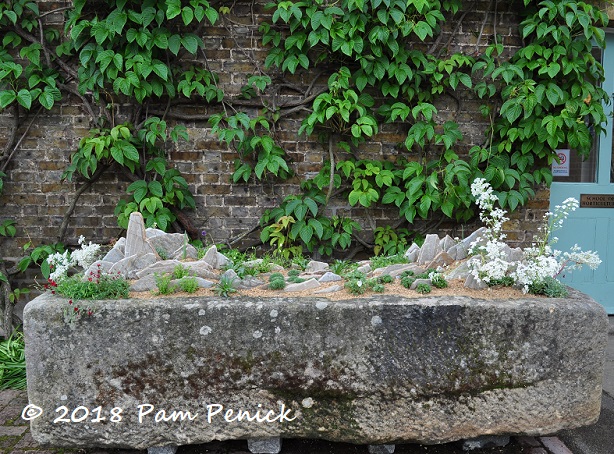

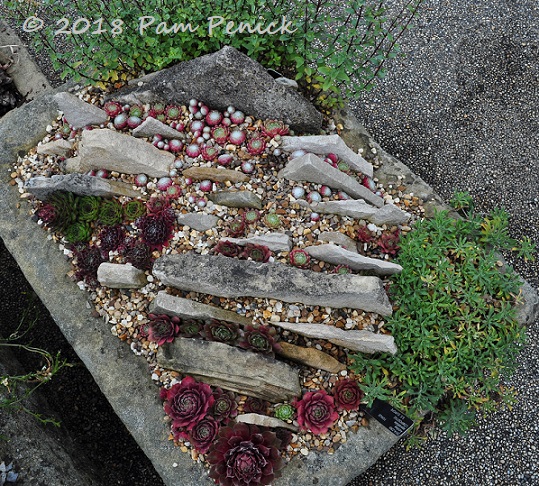
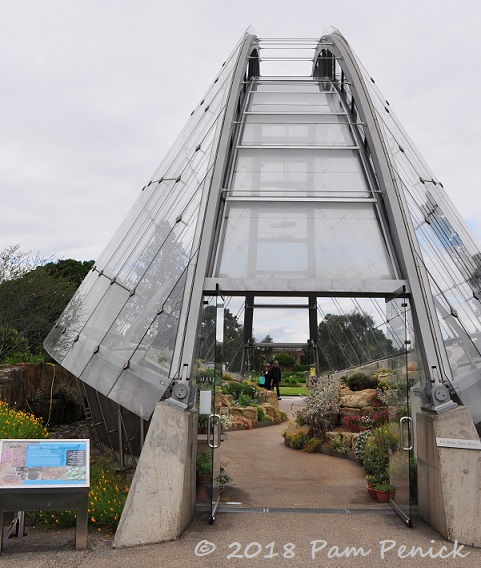
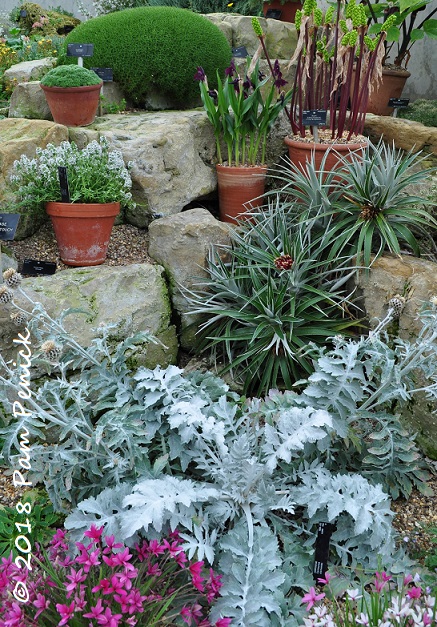



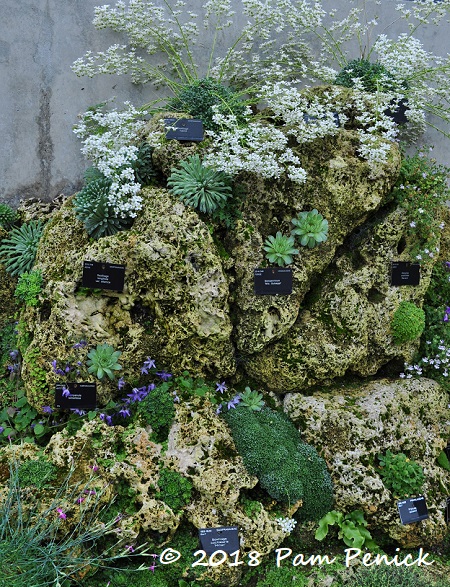













What a wonderful rockery garden. I don’t think it was there when I lived in London and visited Kew regularly. The crevice garden using upright stone is an idea I am borrowing! So many beautiful plants and the mice too cute! I like the cupcake shaped succulent. Thank you for the great photographic tour!
The upright, mountain-like stones in the crevice garden are clever, aren’t they? I hope you’ll share your version online if you make one.
You got such a great shot of the cute noshing mice! They seem pretty unbothered by human activity…
The diversity of the dry/rock gardens around the Alpine House is impressive. Smitten by those staged pots; there’s something inherently luxurious about the concept in any situation, and Kew’s would be expected to be the creme de la creme. Thanks for the absorbing virtual visit.
Those mice were very tame. And yes, the terracotta-potted alpine plants were beautiful in every way.
Oh I just love this ! It would be great to live in a climate where you could create something like this-althughI’m no fan of cold winters ! That terra-cotta collection is right up my alley !
Those potted plants were gorgeous. And yeah, an alpine winter is not for me either.
I have read quite a bit about this Kew collection. Fun to see it through your eyes. It is amazing the cupcakes have such beautiful blooms.
That cupcake was scrumptious!
Can’t believe I did not realize this was in a greenhouse! What a fabulous place. May be my favorite of all the posts you’ve done at Kew. Probably because it is nothing that is ever going to happen in my garden . . .
I think one of those alpine-style trough gardens would look great in your garden, Linda.